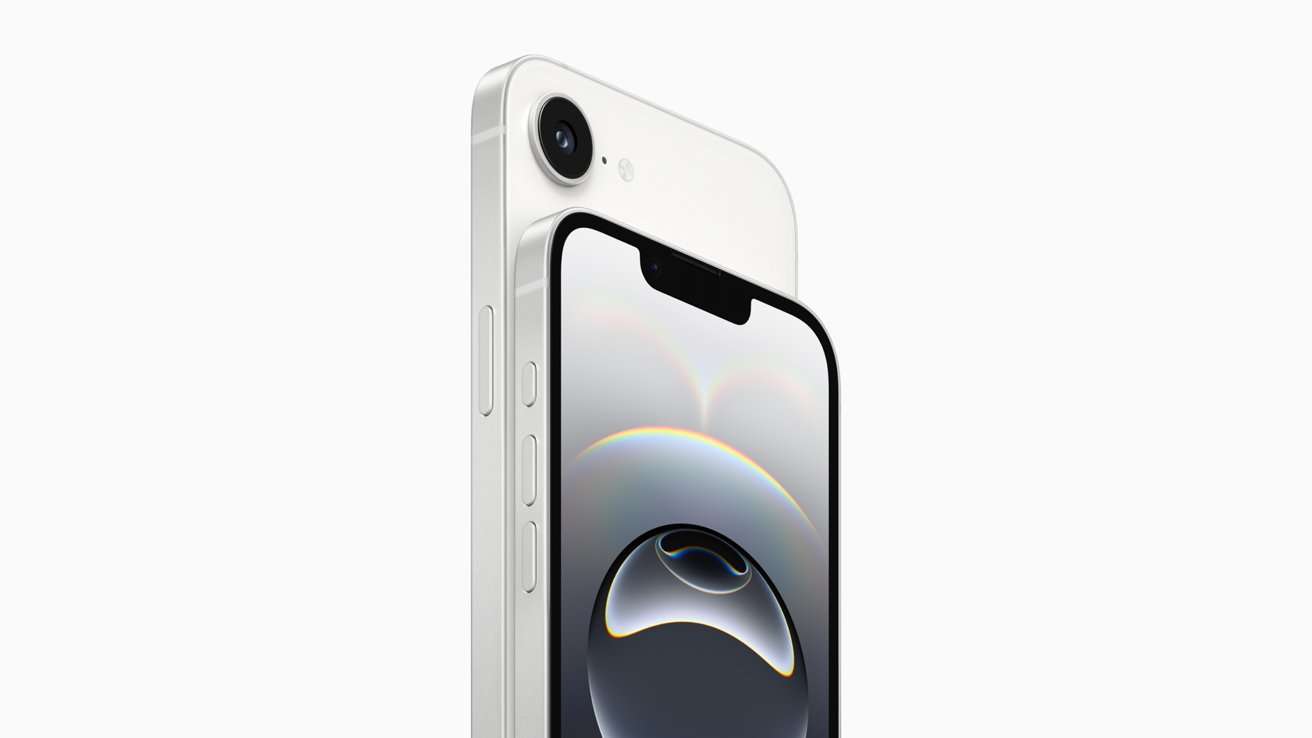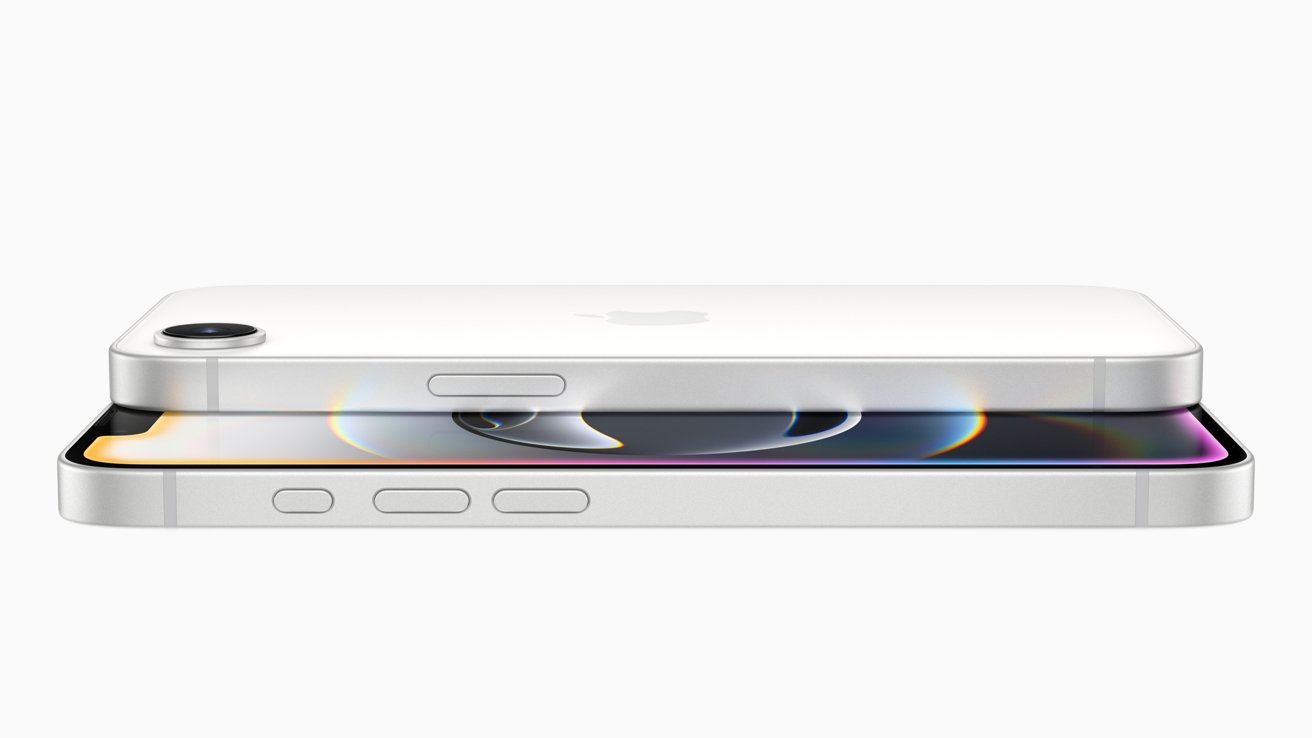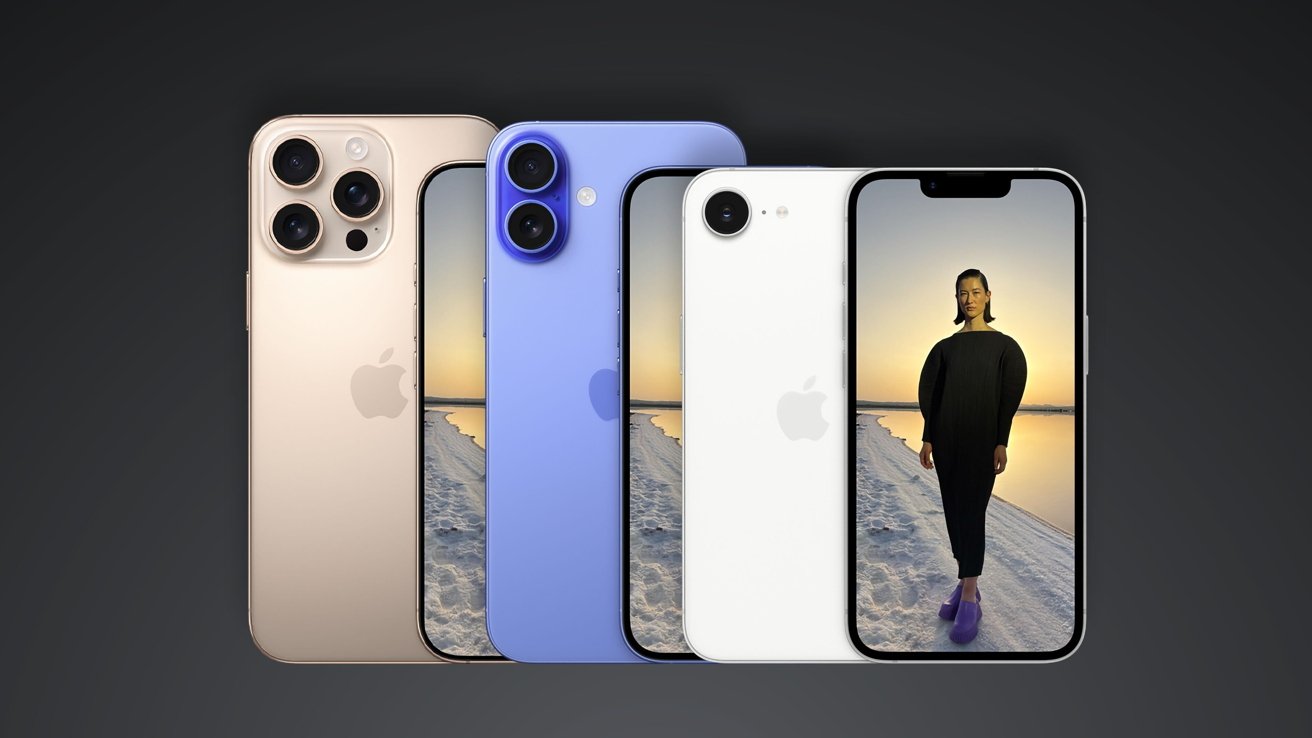Apple ends its Qualcomm dependency with the new C1 modem chip
Apple and Qualcomm's relationship has been strained for a decade and the iPhone 16e C1 chip is Apple's first move to cut ties once and for all.

iPhone 16e
The relationship between Apple and Qualcomm has been a tech soap opera. For over 15 years, Qualcomm's modem chips powered Apple's iPhones, enabling wireless connectivity to cellular networks. And now, it's over.
Behind the scenes, the partnership between Apple and Qualcomm has seen disputes over royalties, patent fees, and personal and professional tensions. As Apple intensifies its efforts to reduce its reliance on Qualcomm, other smartphone companies are watching, according to a report by The Information.
A functional partnership
When Apple launched the first iPhone in 2007, Qualcomm's modem chips were a critical component. The collaboration seemed straightforward -- Qualcomm provided the technology, and Apple integrated it into its iPhones.
However, as iPhone sales skyrocketed, so did the royalty payments Apple owed Qualcomm. Analysts estimated that Apple paid over $2.5 billion in 2024 alone for Qualcomm's patent licenses, fees that Apple's leadership, especially CEO Tim Cook, considered too high.
The first public cracks in the relationship appeared in 2017 when Apple filed a lawsuit against Qualcomm, accusing it of overcharging for patent royalties. Qualcomm countered by suing Apple and even managed to block certain iPhone models from being sold in China and Germany.
These legal skirmishes were partnered with behind-the-scenes snubs, including ignored phone calls and walkouts from high-stakes meetings. For example, former Qualcomm CEO Steve Mollenkopf once left a negotiation at Apple's Cupertino headquarters without informing Cook, leaving him surprised to learn Mollenkopf would not be returning.
Other instances included Mollenkopf appearing disengaged during meetings, such as scrolling through photos of his dog on his phone, which Apple executives took as a sign of disrespect.
Pivoting to Intel and in-house modems
In 2019, Apple and Qualcomm reached a new agreement that ended their legal battle. The deal included a multiyear contract for Qualcomm to supply modems to Apple and a one-time payment of approximately $4.5 billion from Apple.
But for Intel, the outcome was bleak. Since Apple was its only modem customer, the new arrangement meant Intel was out of the picture.

iPhone 16e introduced the C1 modem chip. Image credit: Apple
On the same day the Apple-Qualcomm agreement was announced, Intel announced its exit from the modem business entirely.
Shortly after, Apple acquired Intel's modem business for $1 billion, bringing over 2,200 employees and a bunch of cellular patents to accelerate its in-house modem development.
The current state: C1 modem
Apple's recent launch of the budget-friendly iPhone 16e, featuring an Apple-designed C1 modem instead of a Qualcomm chip, is a big moment for the company. The C1 modem is significant as Apple's first in-house modem used in a production iPhone.
The company plans to phase out Qualcomm modems entirely by 2027, although it still owes royalties for using the 5G standard.
While the C1 modem is a step toward independence, it currently lacks support for millimeter-wave (mmWave) 5G technology, which offers ultra-fast speeds in specific areas. However, Apple is reportedly developing a second-generation modem with mmWave support, expected to debut in future iPhone models.
Apple's road ahead
Plans from Apple to integrate C1 into an iPhone 17 model this fall and replace Qualcomm's modem in the Apple Watch Ultra with MediaTek's technology in 2025 will make the company more independent.

The entire iPhone 16e family
Looking further ahead, Apple aims to introduce its Ganymede modem in 2026, bringing mmWave support to iPhones and at least one iPad. By 2027, the company hopes to release its Prometheus modem, which it believes could finally outperform Qualcomm's offerings.
Qualcomm's strategy moving forward
Of course, Qualcomm won't be happy with Apple's modem efforts. Apple's move will impact its bottom line significantly.
But Qualcomm is already bracing for life without Apple as a customer. Earlier in February, CEO Cristiano Amon told analysts that by 2026, Qualcomm expects to supply modems for just 20% of iPhones -- and none at all by 2027.
To soften the blow, the company has been branching out into other markets, including chips for cars, PCs, virtual and augmented reality, and smart devices, aiming to reduce its dependence on modem sales and patent licensing.
Eliminating Qualcomm modems will save Apple billions annually, as Apple paid around $23 per modem and $8 in patent fees per device.
Such a change might pressure Qualcomm to innovate faster and could influence other smartphone makers to explore alternatives to Qualcomm's dominance.
Read on AppleInsider

Comments
Infineon couldn't transition from 3G to 4G (HSPA, LTE) on their own? They ran into trouble? Intel bought them out, and tried their hands at modem chips.
By 2019, Intel knew they were cooked. Intel's fabrication process advantage was a crutch for their chip designs. They always counted on it to recover from their design mistakes, either by enabling them to make the cheapest chips, chips with the most margin, or simply using a lot of power to maintain performance. If they had a good design, like Yonah and the Bridges, they dominated. By 2019 however, TSMC overtook Intel in fabrication technology, with Intel having failed for about 4 years to get their 10nm fab to mass produce chips.
Chips are only as good as the fabrication process they are made on. Chips have to be within a half-node behind to maintain competitiveness to chips fabbed on a leading edge node. If they aren't and are say 1 node behind, the numbers are bleak: they have half the number of transistors, power consumption is 30% to 100% higher, costs per chip are 50% to 100% higher.
Without being able to compete on fab with TSMC, and Samsung has even caught up, a power consumption sensitive chip like for a cell modem just isn't going to be competitive. It's not hard for a CEO to look at the basic facts of what their fab can do, what their competitor fabs can do, and begin to jettison all the chips that they know won't be competitive. Modems were definitely in that category. x86 had a lot of legacy while being able to tolerate bigger power envelopes, but modems? No.
Apple has the advantage of having a great relationship with TSMC, a very symbiotic one, and can use TSMC's fabs for modem chips.
Intel's other issue was a business one. They wanted 60% margins for their chips. Cell phone SoC and modem chips are targeted to cost about $30 to $50 to OEMs. Intel was in the business of selling $300 to $500 chips to OEMs. They were blinded by their business model debt on where technology was going. And oddly, they saw things like HPC on a card and AI accelerators for a long time. They just could execute on the chip design side on high margin chips either. So, fuckups all around for Intel.
Would be interesting to here the story, read the book, on what Apple was trying to do from 2019 when they bought Intel's modem assets, to the shipping of the C1 modem in the iPhone 16e in 2025.
Did they start from a blank piece of paper for a new modem design? 5 years isn't a bad timeline for a modem chip going from nothing to shipping millions. Did they plan on modifying an existing Intel design? Minimum had to be reworked from being fabbed on Intel 7/10nm to TSMC 4/5nm.
There will be a patent royalties lawsuit campaigns to come with patent pool holders.
$600 iPhone 16e
$700 iPhone 16
$800 iPhone 17
$900 iPhone 17 Air
$1000 iPhone 17 Pro
$1200 iPhone 17 Pro Max.
Tariffs and whatnot may jigger the price tiers or change what comes in the box though. Spring 2026 is the earliest for any kind of change to the iPhone 16e. It will probably be Fall of 2026 for the iPhone 16e to drop to $500. How the iPhone 17 Air will be priced is still a mystery though.
Apple plows much of its profit into R&D, which is why it often has innovative and industry-leading (not to mention best-selling) products. Yes, iPhones are expensive -- but they are clearly superior to nearly all Android phones, except for the premium Android phones which -- surprise! -- are priced comparably.
The first is to have complete control over the design. They include the features that they value and jettison the rest. They aren't stuck with useless transistors or die real estate by using a general purpose chip. This justifies every single custom chip that Apple has produced, not just the A-series, M-series and this C1 comm chip.
The second is performance per watt. Apple has pounded this concept starting with the Apple Silicon announcement with Johny Srouji's presentation but reiterated many times afterward. Apple's biggest cash cow is the iPhone product line. Over 85% of Macs sold are notebook models. The iPod is a significant part of Apple's revenue mix as well as Wearables (Watch, AirPods and now Apple Vision Pro).
If Apple can produce silicon that performs comparably with the competitors' components yet does so with a power savings, that's a competitive advantage to Apple whether it be consumer products like the ones you can buy at Apple.com or now in its data centers.
Any cost savings -- if there are any (I doubt they are significant) -- are welcomed but are not the main driver of Apple's custom silicon philosophy.
I'm sure Apple is looking at other chips in its products to figure out if they are suitable candidates to bring in-house, including (but not limited to) WiFi, Bluetooth, GPS, NFC contactless transactions, etc. Clearly Apple knows that components use the most power in typical usage cases so I would expect them to prioritize that silicon for possible in-house custom design.
The price of a product does not depend at all on how much it costs to produce the product. The price is determined by whatever the market can bear, which factors in the state of competition.
A company's cost of producing a product, however, when compared to what price the market can bear, determines whether or not that company would produce and sell that product.
Now when a company achieves a lower product cost, it may or may not choose to lower its price, and this completely depends on what price (and resulting sales revenues) maximizes its profit. It might increase a company's profit to turn some or all of that cost reduction into a lower price, or it easily might not.
In Apple's case, the fact that it has very high profit margins compared to its competitors reveals that its customers value Apple products way more than it costs to produce them.
[Side Note] Apple's IP address hiding can wreak havoc on DHCP reservations. If you want to lock your IP address on an Apple device using a DHCP reservation, don't use IP address hiding. You'll get a permanent warning in security settings, but on a private network that doesn't allow incoming connections I am happy to ignore the warning.
The cellular modem exhibits some of the same behaviors where it will hold on to a weak channel too long. If the phone is in the middle of doing a large upload or download when the signal falls below a threshold you'll end up waiting for all the IP connections to time-out and perform retries before it finally gives up. The application you're running is effectively locked up and will stay in the struggling state longer than you think it should. Again, in these cases toggling the Airplane mode seems to restore connectivity, if available, quicker than waiting for everything to time out. Aborting the connection and starting from scratch has helped me on several occasions.
I've found that I can make things a bit better with WiFi by tweaking AP radio connection parameters like transmit power, setting a higher minimum RSSI, band steering, and enabling fast roaming. However, the onus is still on the CLIENT to take advantage of the subtle and not so subtle "hints" that the APs are providing to convince the client to abandon the current AP and move to another one. It's usually not an AP issue, it's the device. If you tweak the RSSI too high you may see intermittent loss of the WiFi connection or it may latch on to an AP you're closer to while your moving between APs and you'll still see slow roaming. Like you said, if Apple totally controls the client side they may be able to do a better job compared to what they can do when using a more generic solution. We'll see.
I've always seen Apple as being as far away from Qualcomm as it possibly could right from the patent spat and switch to Intel.
From that moment on it was Intel all the way (even with poorer performance) wherever possible.
Qualcomm basically knew it would stop being an Apple supplier for its iPhone modems. Qualcomm never expected Apple to be back after things went to court.
With that in mind, this isn't a 2025 'loss' for Qualcomm. It's really the complete opposite. It's the beginning of the end of a multi-billion dollar surprise windfall for Qualcomm that it never expected to have in the first place. It has been laughing all the way to the bank since 2019 due to Apple having no other option but to cease litigation and sign on to a new Qualcomm deal.
That definitely wasn't anywhere on Apple's roadmap. Neither was a homegrown modem.
This snippet reads strangely to me:
"In 2019, Apple and Qualcomm reached a new agreement that ended their legal battle. The deal included a multiyear contract for Qualcomm to supply modems to Apple and a one-time payment of approximately $4.5 billion from Apple.
But for Intel, the outcome was bleak. Since Apple was its only modem customer, the new arrangement meant Intel was out of the picture."
It reads like Apple signed with Qualcomm and left Intel with a bleak outlook whereas my recollection is the opposite.
Intel failed to deliver and left Apple with no option but to go back to Qualcomm.
As a result of Intel failing to deliver a viable product on time, Apple had to make a key strategic decision: stick with Qualcomm and save billions in the process or go it alone and try to build a modem itself.
It chose the latter.
As a strategic move it was correct IMO. It was costly and left them literally years behind the competition (in terms of homegrown products) but the deal with Qualcomm was at least a lifeline to a competitive solution. The result remains far behind current solutions but at least the public roadmap is clearer. Basically to wait even more years for a competitive solution and even then it would be crazy to think Qualcomm, Mediatek and Huawei are resting on their laurels.
Again from a strategic perspective, I wouldn't be concerned if Apple's solutions are not as performant on speed but they absolutely must be robust in terms of things like handover, holding a signal and dealing with very weak signals. In those situations other areas are critical: materials, antennas and AI. Existing solutions have made great strides with that over the years. Energy efficiency is not relevant because current solutions are already fine for current usage.
Patent-wise, it will continue to pay Qualcomm, Huawei, Samsung etc. In engineering terms, I have an inkling that Mediatek, Broadcom and Qualcomm still remain key elements in Apple's efforts to get a cellular/wifi solution onto its devices.
Events arise and change plans all the time. By late 2018, and definitely in 2019, Apple knew Intel was deadman walking. They made the decision to switch from Intel x86 to Apple Silicon in late 2018 or Fall of 2019 at the absolute latest.